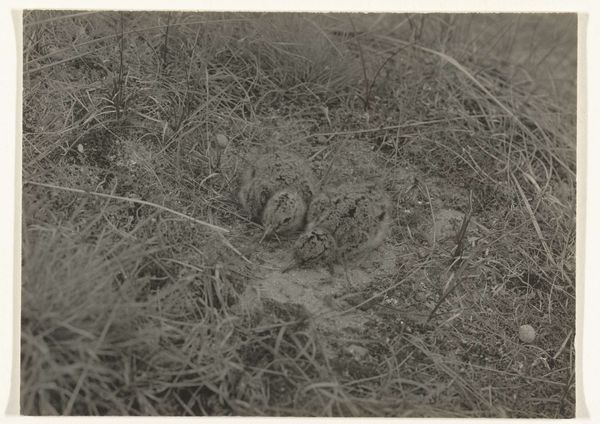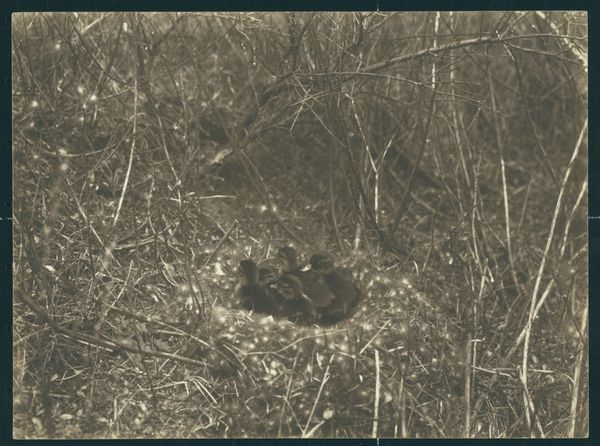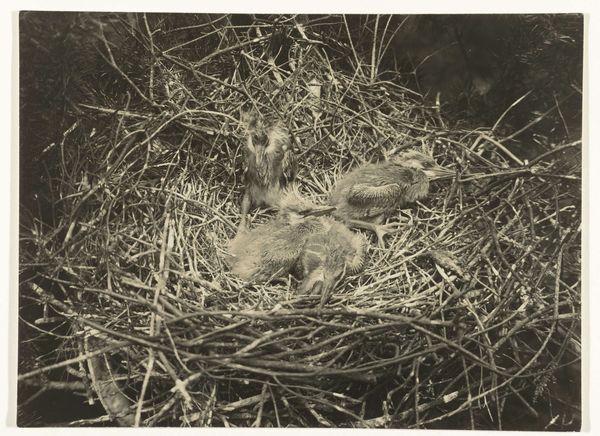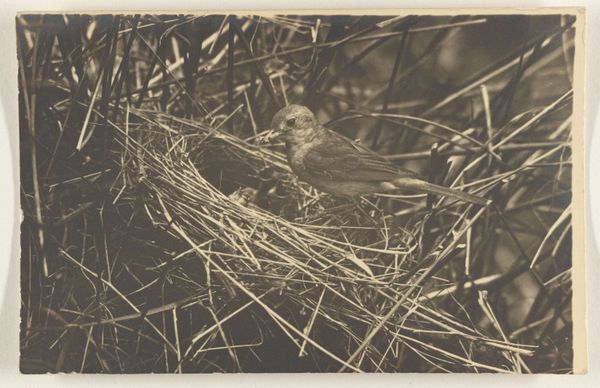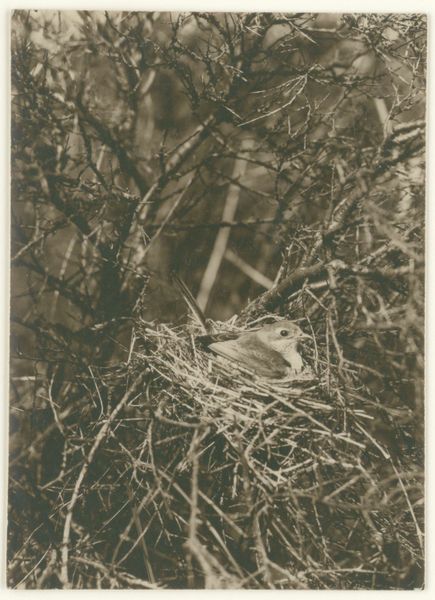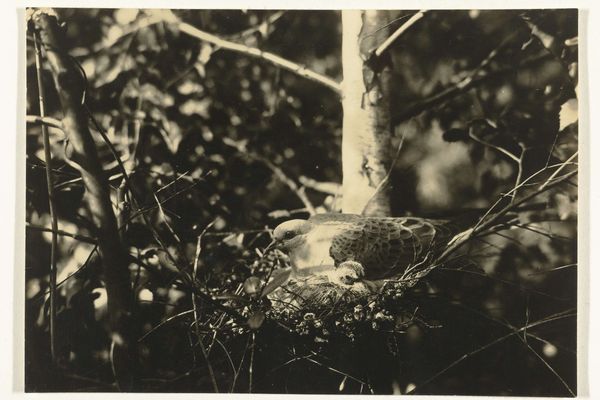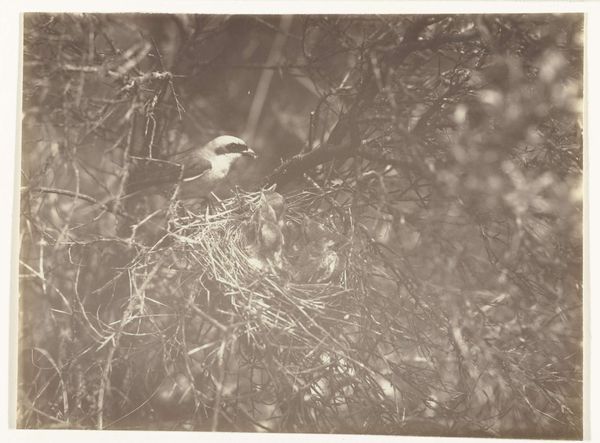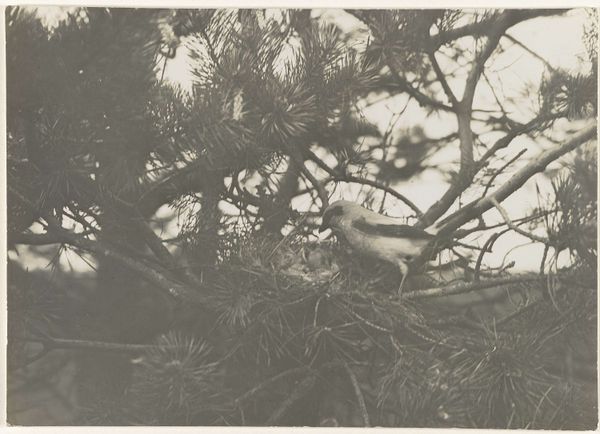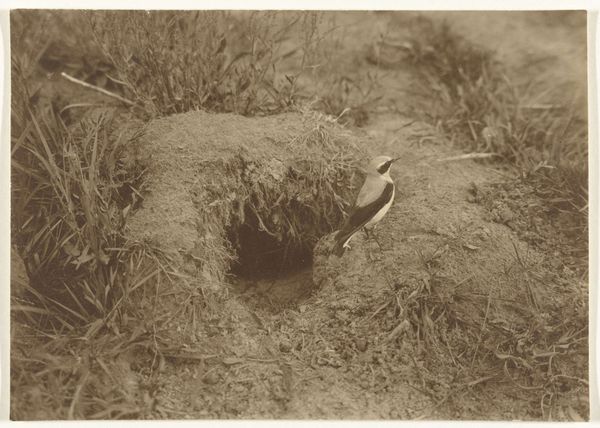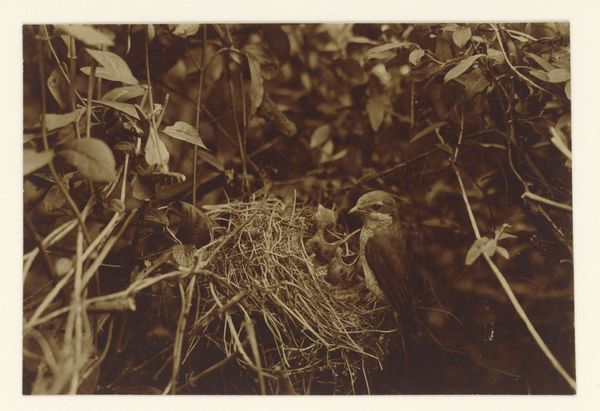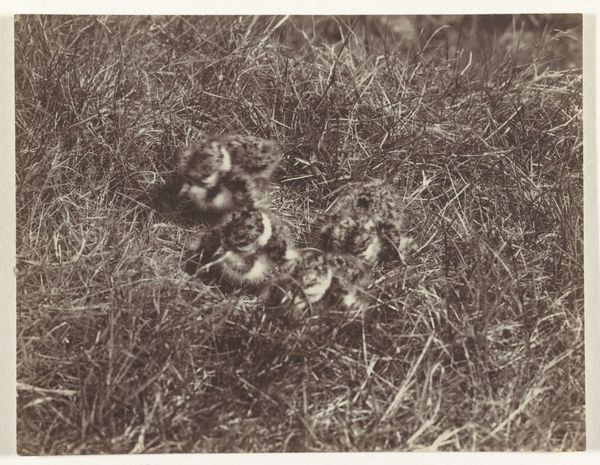
Dimensions: height 102 mm, width 125 mm
Copyright: Rijks Museum: Open Domain
Editor: Here we have Richard Tepe’s "Jonge veldleeuwerik op een nest" or "Young Skylark on a Nest," taken sometime between 1900 and 1930. It’s a photograph, a detailed look into a hidden world. I’m struck by its intimacy and vulnerability. What do you see in this piece, especially considering its historical context? Curator: This photograph provides a fascinating glimpse into the social construction of nature and childhood at the turn of the century. Think about it: here’s a delicate creature, vulnerable in its nest, presented as a subject for our gaze. What does it tell us about the relationship between humans and the natural world during a period marked by increasing industrialization and urbanization? It asks us to reflect on how these themes intertwine. Editor: I never considered it in that light. I just saw it as a simple nature study. Curator: It's easy to get lost in its apparent simplicity. But consider the act of photographing it: Tepe entered the bird’s domain, disrupting its natural state to capture this image. Isn't it suggestive that the photograph serves as a potent symbol for lost innocence? We could also explore how this relates to anxieties surrounding disappearing rural landscapes and idealized visions of childhood prevalent at the time. Editor: That’s a really powerful way of looking at it. It reframes the entire piece, doesn't it? Curator: Precisely! What seems like a straightforward depiction of nature, speaks volumes about societal values and anxieties. Art often holds a mirror to the social issues of its era. Editor: I will definitely keep that in mind as I consider the ethical considerations behind how we engage with nature through art. Thank you! Curator: My pleasure. Art, after all, is rarely just what we see on the surface; it's a dialogue.
Comments
No comments
Be the first to comment and join the conversation on the ultimate creative platform.

